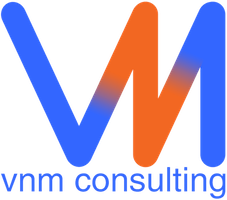
How to deliver even the most difficult Salesforce implementations successfully
The Salesforce platform has evolved into a vast feature & function rich solution that can deliver the best customer experience.
It is no longer just ‘CRM’ – it is the ‘Customer Experience Platform – CXP, or CXM’ because it spans the spectrum from marketing through to sales through to service.
This is fantastic for any enterprise – however it’s not that easy to implement successfully:-
- How do you work out what solutions you need? – what parts of the platform make sense for your business objectives – which Salesforce Cloud licenses should be purchased?
- How do you work out across groups, divisions, entities and geographies which business requirements make sense to implement?
- How can you set up your various teams – business, technology, system integrators, other 3rd parties – to deliver successfully?
Why traditional methodologies may not work?
Often programmes assume that because they have a delivery methodology (sometimes from the technology group, or sometimes from the systems integrator) that it will ensure that the Salesforce implementation will be successfully delivered.
This is NOT the case. These methodologies are generally devised around process and task – similar to say a recipe card that indicates a set of steps – but following those steps without having the right capability or sense of the outcome (look, taste, aroma of the recipe dish) can often lead to delivery problems and potentially failure (the dish is burnt and tastes awful! You have to start again!)
How Vision Alignment Method (VAM) can enable successful Salesforce implementation
At VNM, our experience has been that there are three dimensions, that if structured well in a Salesforce implementation, can increase the probability of successful delivery. These are:
- Vision – the business objective of the initiative stated to show the benefits for all the enterprises stakeholders
- Capability – the skills and experience required to do the various aspects of the Salesforce implementation
- Resources – the amount of capability required to deliver each phase of the programme
For Vision, one of the most critical reasons that lead to failure is the lack of defining the ‘What’s in it for me’ – WIIFM – for the range of stakeholders involved. One of the more common examples is WIIFM for a sales individual – the management have a clear objective to get more opportunities into the sales pipeline using Salesforce, but there is not a clear articulation as to the improvement or benefit seen by a sales individual – usually this person will perceive additional effort required to enter more data than before.
How VAM helps here is that it focusses on defining a Vision in a stepwise manner that works through and includes all the key stakeholders. Also VAM checks the alignment to the vision as the programme progresses and adjustments can be made to ensure things stay on track.
When it comes to Capability, things are not straightforward. Knowing what capability and defining it can be quite tricky especially as the Salesforce ecosystem continues to innovate and evolve. This is further complicated when the capability of the technology team and systems integrator is taken into account. A word of caution here – systems integrators and 3rd parties (even if they state they are Gold/Platinum partners of Salesforce) do not necessarily have the expertise in the solution or technology that you have chosen from the Salesforce ecosystem e.g.Vlocity is a fast growing Salesforce vertical solution, but due to its success and rapid rise, the ecosystem has not been able to grow the capability at the same speed (NOTE: fortunately VNM has invested in developing this capability – click to learn more url.url.url).
VAM when used by the Salesforce experienced consultants from VNM helps to not only identify the critical capabilities but also maps the alignment to the Salesforce programme vision.
The challenge with Resources is figuring out the scale required. Once again the rapid rise and success of the Salesforce ecosystem is a key reason – there is not enough standardised estimating information publicly available – therefore there is a reliance on the systems integrators and partners, and the outcome really is a very mixed bag. Very often the estimates are too optimistic and hence too low – result being the project has to be extended and then extended again.
Once again the Salesforce experienced consultants from VNM use VAM along with estimating models to judge levels required and hence get the programme set for success.
How VNM can help you?
To learn more about how VNM has used VAM successfully at its enterprise clients, please click here to get in touch. One of our experts will contact you to help.
